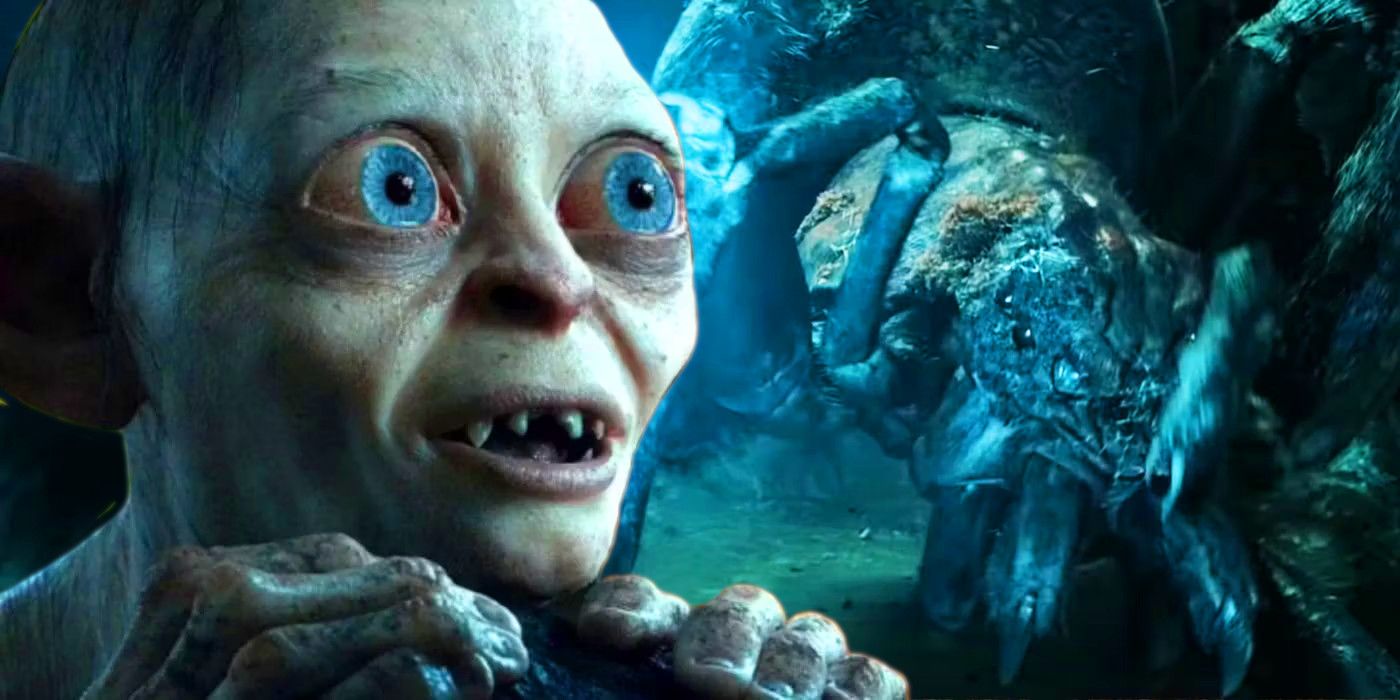
Shelob usually left the bones and clothes of her victims behind, so Gollum hoped that he could salvage the One Ring from Frodo’s remains after she ate him. As shown in Jackson’s The Lord of the Rings: The Return of the King, Gollum’s plan failed. Though Shelob did paralyze and capture Frodo, Sam was able to defeat her before she devoured him. Mistakenly thinking Frodo was dead, he took the One Ring and carried on with the mission. What Jackson’s film did not explain was how Gollum knew of Shelob or why he was able to navigate her lair safely. The answer to these questions lay in J. R. R. Tolkien‘s The Lord of the Rings novel, which describes Gollum’s introduction to Shelob and the unusual dynamic between the two monsters.
Gollum Was Shelob’s Servant in The Lord of the Rings
Name
Gollum / Sméagol
Shelob
Race
Hobbit
Half spirit, half spider
Birthplace
Near the Fields of Gladden
Nan Dungortheb
Age in The Return of the King
Roughly 589
At least 6,460
Actor in Jackson’s Films
Andy Serkis
n/a
Gollum first met Shelob around the year 2980 of the Third Age, 21 years before the start of The Lord of the Rings. In the chapter “Shelob’s Lair” from The Two Towers, Tolkien explained that Gollum learned of Shelob’s existence when he was in Mordor because of his imprisonment by Sauron. Gollum habitually “pried into all dark holes,” so he naturally discovered her lair in the mountains. After Sauron released Gollum, he went through Torech Ungol to leave Mordor. He encountered Shelob on the way out, but she chose not to eat him. There were two reasons that Shelob decided to spare the strange intruder in her tunnel. The first is that Gollum would have been a poor meal; in the chapter “The Black Gate is Closed” from The Two Towers, Tolkien described him as “bone-thin.”
But to a ravenous beast like Shelob, even meager prey was better than nothing, so that alone was not enough to save him. The second reason she spared Gollum is that he struck a deal with her. According to “Shelob’s Lair,” Gollum “had bowed and worshipped her… And he had promised to bring her food.” Gollum was an expert at stalking and killing Orcs because of the time he spent near Goblin town in the Misty Mountains, so he was able to save her the effort of hunting. By luring Frodo and Sam into Shelob’s Lair, Gollum was simultaneously serving his own ends and fulfilling the promise that he had made to her years ago. This also allowed Gollum to more easily justify his betrayal, as he was technically not bringing harm to Frodo — Shelob was.
Shelob Made Gollum Worse in The Lord of the Rings
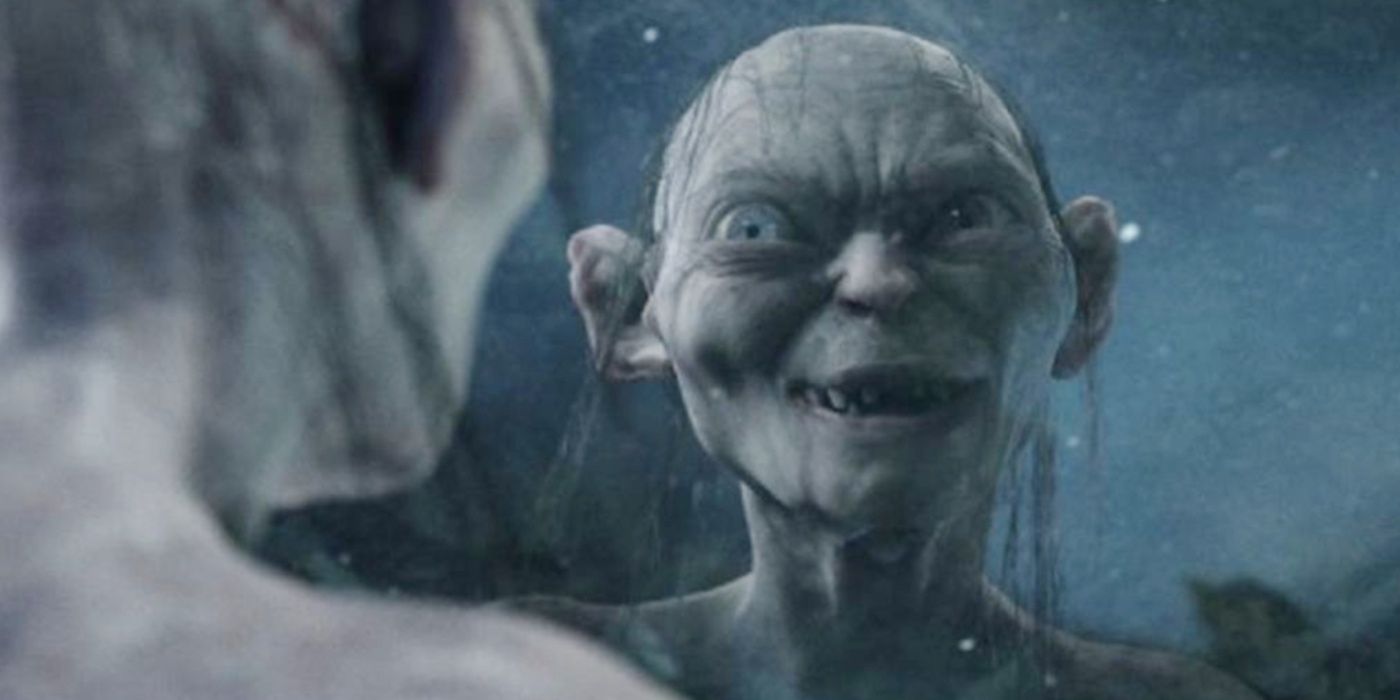
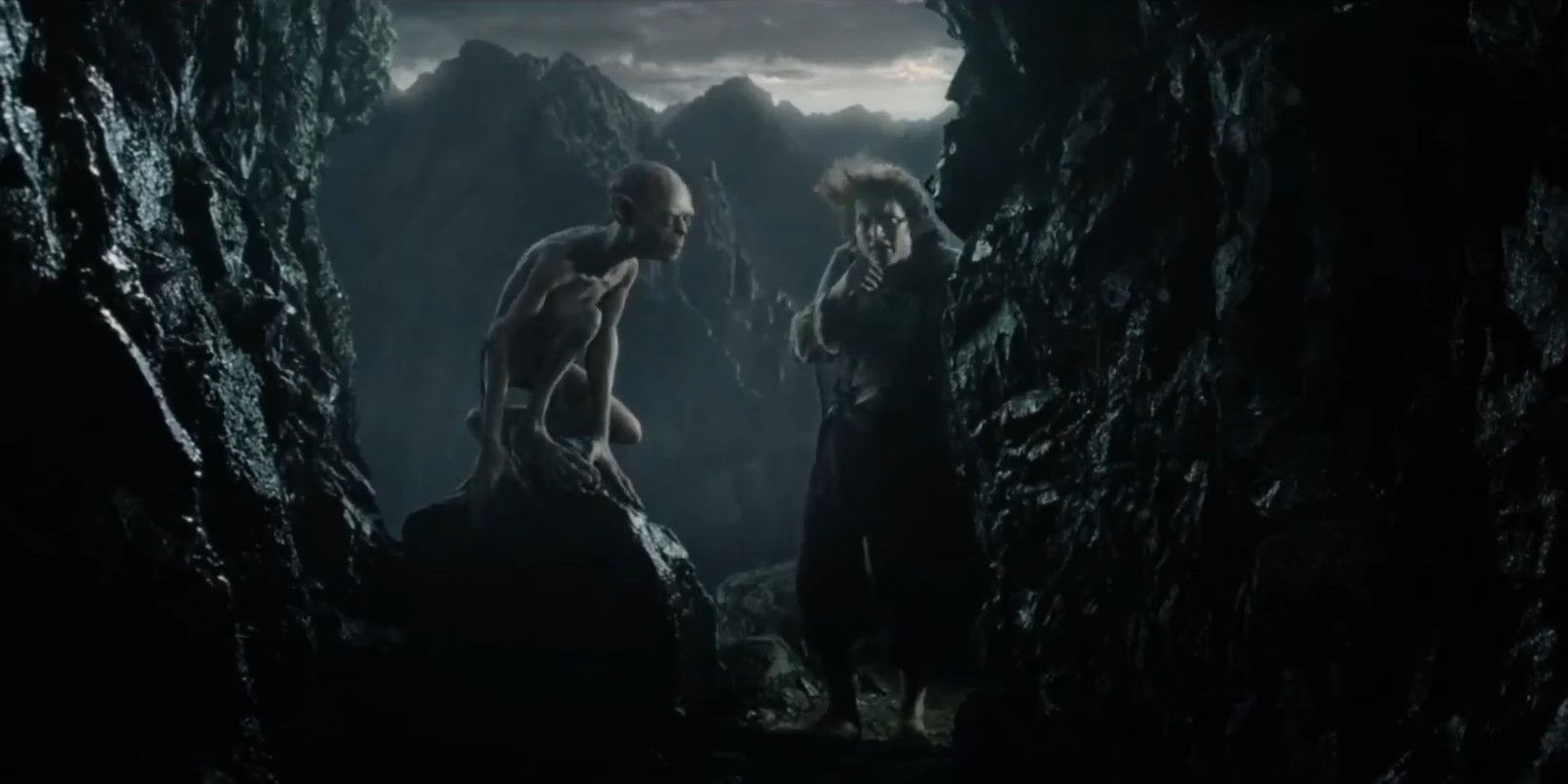
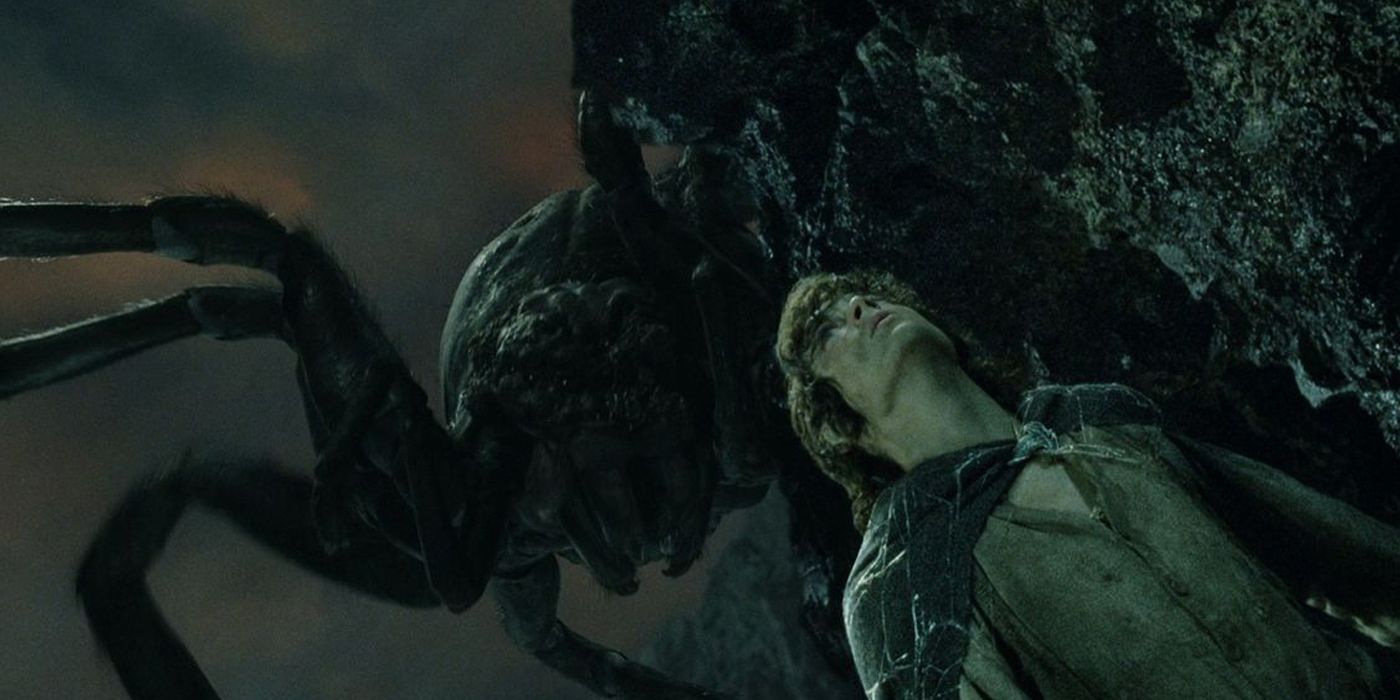
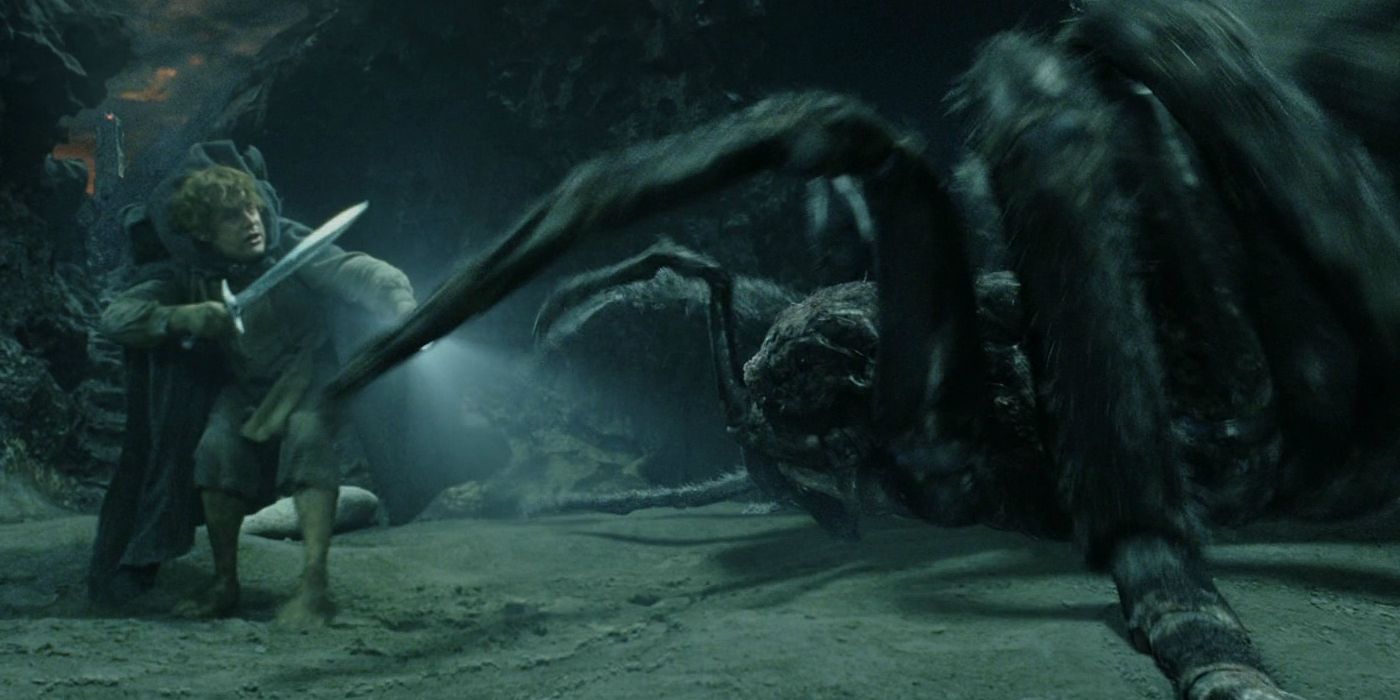
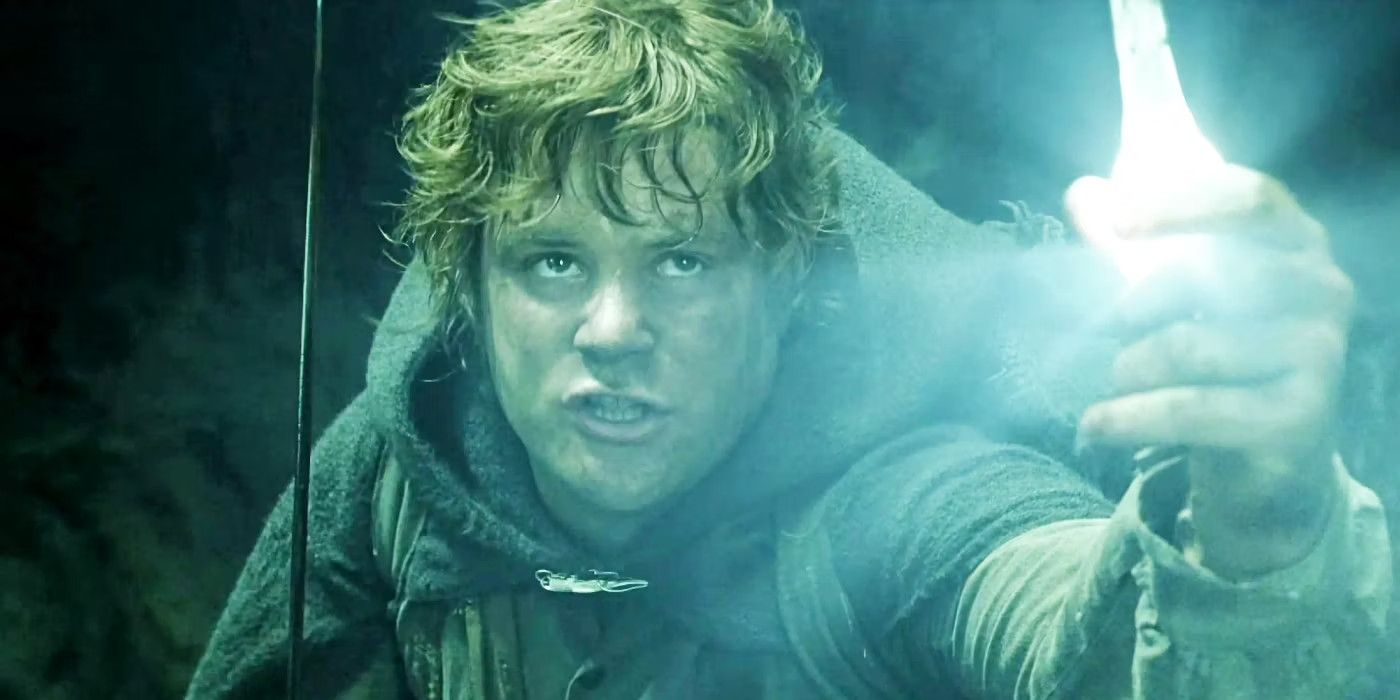





In Gollum’s dialogue, Tolkien capitalized the words “She” and “Her” when they referred to Shelob.
In “Shelob’s Lair,” Gollum said, “And when we’ve got [the One Ring] safe, then She’ll know it, O yes, then we’ll pay Her back, my precious. Then we’ll pay everyone back.”
In the novel, Shelob uses her fangs to inject her prey with venom, but in Jackson’s film, she uses a stinger on her abdomen.
The Lord of the Rings did not clarify how Gollum and Shelob communicated. There was no evidence that Shelob knew the Common Speech or any other language; she only made “a gurgling, bubbling noise, and a long venomous hiss.” However, this did not necessarily mean that she was incapable of speaking. Shelob’s mother, the evil spirit Ungoliant, conversed in full sentences during The Silmarillion, and quite eloquently at that. Shelob’s offspring, the spiders of Mirkwood, also spoke in The Hobbit. If the rest of her family could speak, she likely could as well. Shelob only cared about food, so she usually fell into basic, bestial ways, but she was more intelligent than she seemed. Shelob and her fellow giant spiders were able to strategize and cooperate with other beings. Perhaps she simply felt no need to speak when Frodo and Sam were in her lair.
Shelob had a strange effect on Gollum’s psyche. In “Shelob’s Lair,” Tolkien wrote, “the darkness of her evil will walked through all the ways of his weariness beside him, cutting him off from light and from regret.” In other words, Shelob contributed to Gollum’s moral downfall. If not for her influence, he might have been able to redeem himself in The Lord of the Rings. This aura of evil is another ability that she inherited from her mother. In the section “Of the Darkening of Valinor” from The Silmarillion, Ungoliant formed “dark nets of strangling gloom” and clouds of darkness “made by malice.” She and her daughter were not just monsters — they were embodiments of pure evil in Middle-earth.
In “Shelob’s Lair,” Tolkien wrote, “the darkness of her evil will walked through all the ways of his weariness beside him, cutting him off from light and from regret.”
Gollum’s Deal With Shelob Had Disastrous Results
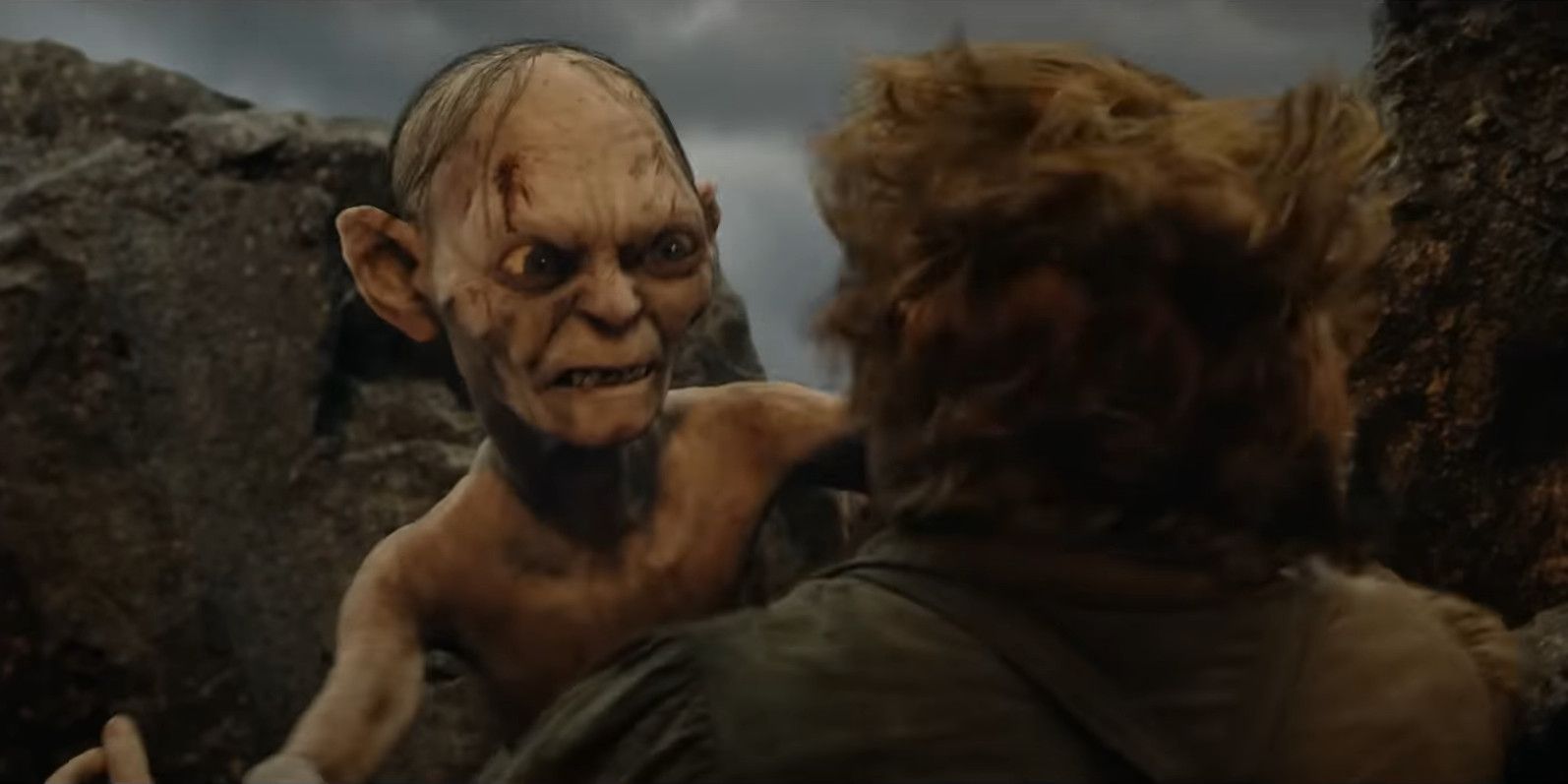
The sound effects for Shelob in Jackson’s film included the roar of a Tasmanian devil and the release of steam from an espresso machine.
Middle-earth’s giant spiders all ate meat, but Ungoliant also ate light.
According to the chapter “The Choices of Master Samwise” from The Return of the King, the Orcs referred to Gollum as Shelob’s “Sneak.”
Gollum’s relationship with Shelob in The Lord of the Rings paralleled the Dark Lord Morgoth‘s relationship with Ungoliant in The Silmarillion. Gollum and Morgoth both desired magical artifacts — the One Ring and the Silmarils, respectively — and they both promised the giant spiders something to eat in exchange for their help. Both alliances went wrong, though in different ways. Ungoliant destroyed the Two Trees of Valinor as Morgoth wished, but she turned on him when he did not uphold his end of the bargain. Shelob and Gollum did not betray each other, but Shelob failed to kill Frodo and Sam, so Gollum was unable to take the One Ring.
Just as The Lord of the Rings‘ heroes built each other up, its villains brought each other down. Shelob’s evil fed into Gollum’s, pushing him toward an even greater state of depravity. An overarching theme of The Lord of the Rings is that evil is its own undoing; some examples include Sauron creating the object that led to his defeat and the Orcs letting Sam rescue Frodo because they were busy fighting each other. In this same vein, Shelob was indirectly responsible for Gollum’s fate. By encouraging his wicked behavior, she made it harder for him to resist the One Ring’s temptation, and this temptation ultimately led to Gollum’s death and the One Ring’s destruction.





